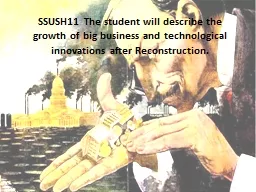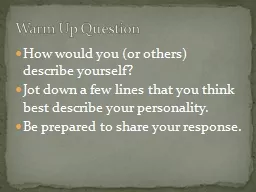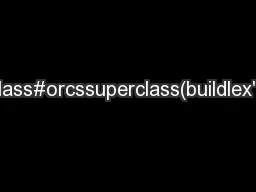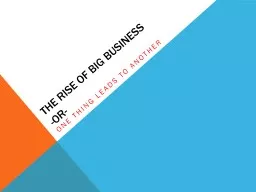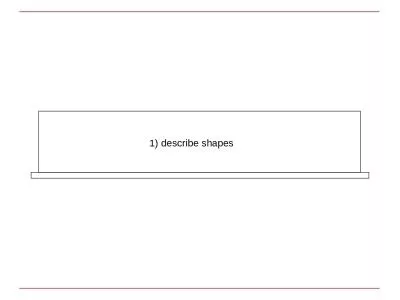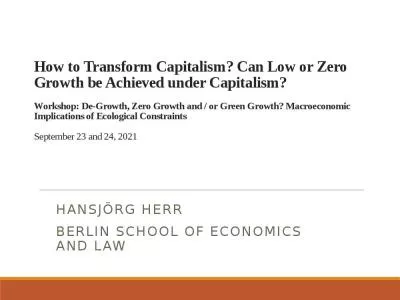PPT-SSUSH11 The student will describe the growth of big busines
Author : celsa-spraggs | Published Date : 2017-10-27
a Explain the impact of the railroads on other industries such as steel and on the organization of big business The railroad companies contributed to the development
Presentation Embed Code
Download Presentation
Download Presentation The PPT/PDF document "SSUSH11 The student will describe the gr..." is the property of its rightful owner. Permission is granted to download and print the materials on this website for personal, non-commercial use only, and to display it on your personal computer provided you do not modify the materials and that you retain all copyright notices contained in the materials. By downloading content from our website, you accept the terms of this agreement.
SSUSH11 The student will describe the growth of big busines: Transcript
Download Rules Of Document
"SSUSH11 The student will describe the growth of big busines"The content belongs to its owner. You may download and print it for personal use, without modification, and keep all copyright notices. By downloading, you agree to these terms.
Related Documents

